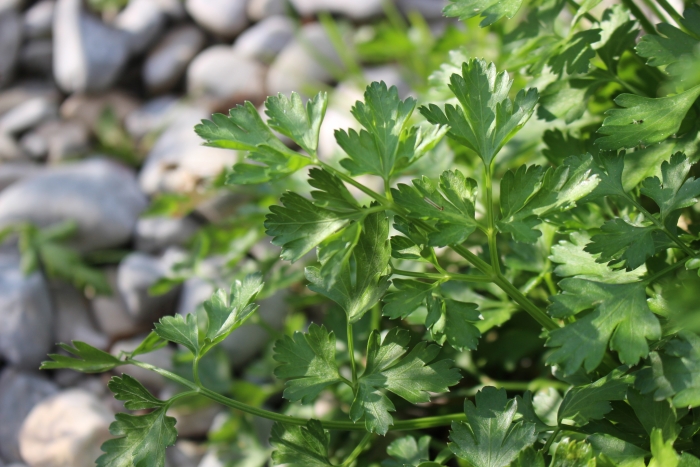Parsley
(Petroselinum crispum)
Parsley (Petroselinum crispum)
/
/

© Fabien Piednoir
CC BY-SA 4.0
Image By:
© Fabien Piednoir
Recorded By:
Copyright:
CC BY-SA 4.0
Copyright Notice:
Photo by: © Fabien Piednoir | License Type: CC BY-SA 4.0 | License URL: http://creativecommons.org/licenses/by-sa/4.0/ | Uploader: fabienpiednoir | Publisher: iNaturalist |

























Estimated Native Range
Summary
Petroselinum crispum, commonly known as Parsley, including varieties such as Garden Parsley, Flat-leaf Parsley, and Curled Parsley, is a biennial plant in temperate climates and an annual herb in subtropical and tropical areas. It is native to the Eastern Mediterranean region, specifically to rocky hillsides and scrub areas. The plant typically grows to a height of 1 foot and a width of 1-2 feet. Parsley has a rosette of bright green leaves that can be either flat (Italian parsley) or crinkled (curled parsley), and it produces small, pale yellow to white flowers during the summer, which are generally not grown for their ornamental value.
Parsley is highly valued for its flavorful leaves, which are rich in vitamins and used as a garnish or seasoning in a wide range of cuisines, including Middle Eastern, Mediterranean, Brazilian, and American. It is easy to grow and maintain, making it a popular choice for kitchen gardens, herb gardens, and as a potted plant on balconies and windowsills. Parsley prefers well-drained soil, consistent moisture, and full sun, although it can tolerate light shade. It is also a host plant for the caterpillars of the Black Swallowtail butterfly, providing an ecological benefit. Overwatering or poor drainage can lead to root rot, and it can attract pests like aphids and parsley worms. Parsley is not known for being invasive and is generally safe to grow without concern for spreading beyond its intended area.CC BY-SA 4.0
Parsley is highly valued for its flavorful leaves, which are rich in vitamins and used as a garnish or seasoning in a wide range of cuisines, including Middle Eastern, Mediterranean, Brazilian, and American. It is easy to grow and maintain, making it a popular choice for kitchen gardens, herb gardens, and as a potted plant on balconies and windowsills. Parsley prefers well-drained soil, consistent moisture, and full sun, although it can tolerate light shade. It is also a host plant for the caterpillars of the Black Swallowtail butterfly, providing an ecological benefit. Overwatering or poor drainage can lead to root rot, and it can attract pests like aphids and parsley worms. Parsley is not known for being invasive and is generally safe to grow without concern for spreading beyond its intended area.CC BY-SA 4.0
Plant Description
- Plant Type: Herb
- Height: 1-2 feet
- Width: 0.5-1 feet
- Growth Rate: Rapid
- Flower Color: N/A
- Flowering Season: Summer, Fall
- Leaf Retention: Deciduous
Growth Requirements
- Sun: Full Sun
- Water: Medium
- Drainage: Medium
Common Uses
Bee Garden, Butterfly Garden, Edible*Disclaimer: Easyscape's listed plant edibility is for informational use. Always verify the safety and proper identification of any plant before consumption., Low Maintenance, Potted Plant, Street Planting
Natural Habitat
Native to rocky hillsides and scrub areas in the Eastern Mediterranean region
Other Names
Common Names: Flat-leaf Parsley , Curled Parsley , Garden Parsley
Scientific Names: Petroselinum crispum , Apium hortulanum , Petroselinum crispum , Petroselinum neapolitanum , Petroselinum sativum , Petroselinum vulgare , Petroselinum vulgare
GBIF Accepted Name: